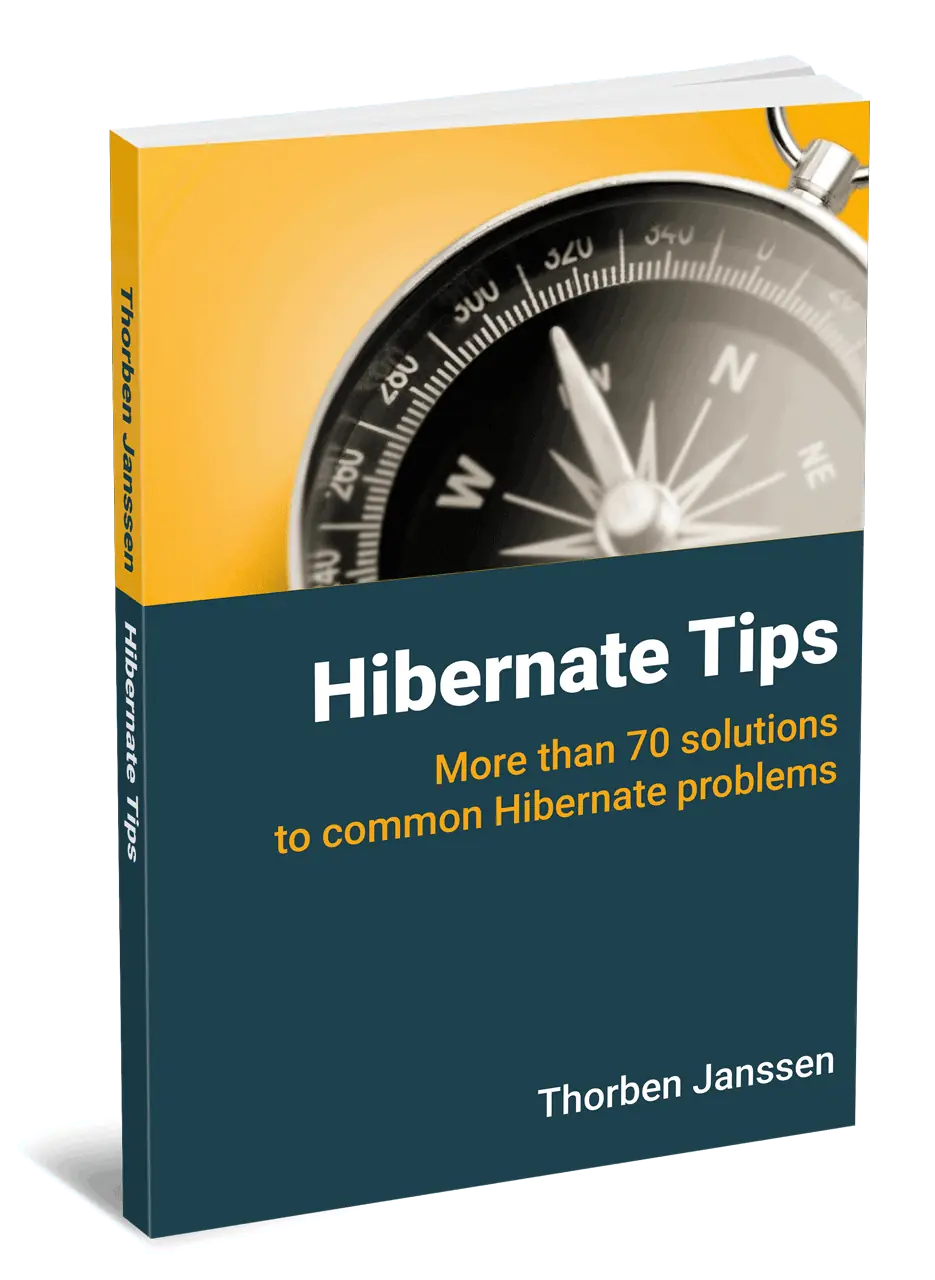Hibernate Tips: How to Map java.time.Year with JPA and Hibernate
Take your skills to the next level!
The Persistence Hub is the place to be for every Java developer. It gives you access to all my premium video courses, monthly Java Persistence News, monthly coding problems, and regular expert sessions.
Hibernate Tips is a series of posts in which I describe a quick and easy solution for common Hibernate questions. If you have a question for a future Hibernate Tip, please post a comment below.
Question:
How can I map a java.time.Year attribute with Hibernate?
Solution:
JPA 2.2 and Hibernate support several classes of the Date and Time API. Unfortunately, the java.time.Year class isn’t one of them. If you want to use it as an attribute type, you need to provide a custom mapping for it.
But don’t worry, you can do that easily with an AttributeConverter, and it only requires a few lines of code.
An AttributeConverter provides a portable way to create custom type mappings. The only thing you need to do is to implement the AttributeConverter interface and annotate your class with the @Converter annotation.
Implementing the YearConverter
Here you can see an example of an AttributeConverter that maps a java.time.Year object to a Short.
@Converter(autoApply = true)
public class YearConverter implements AttributeConverter<Year, Short> {
Logger log = Logger.getLogger(YearConverter.class.getSimpleName());
@Override
public Short convertToDatabaseColumn(Year attribute) {
short year = (short) attribute.getValue();
log.info("Convert Year ["+attribute+"] to short ["+year+"]");
return year;
}
@Override
public Year convertToEntityAttribute(Short dbValue) {
Year year = Year.of(dbValue);
log.info("Convert Short ["+dbValue+"] to Year ["+year+"]");
return year;
}
}
As you can see, the implementation of a converter is very simple. The interface only defines a method to convert the entity attribute to its database representation and another one for the inverse operation.
In this example, the implementation of these 2 methods is pretty simple because the Year class already provides methods to get the Integer value of a give Year object and to create a Year object from an Integer. You can then either persist the Integer or you can try to save some space and cast it to a Short.
When you annotate your AttributeConverter with the @Converter annotation, you should ask yourself if you want to use it for all attributes of the converted type. If you want to do that, you should set the autoApply attribute to true. Hibernate will then use the converter automatically, and you don’t need to use any additional mapping annotation. In this case, the decision is easy. Hibernate doesn’t support java.time.Year as a type and you should use it for all entity attributes of that type.
Using the YearConverter
After you implemented the YearConverter and added it to your project, you can use java.time.Year as an attribute type. And because you set the autoApply attribute to true, you can do that without any additional mapping annotations.
@Entity
public class OnlineCourse {
@Id
@GeneratedValue
private Long id;
private String title;
private Year publishingYear;
@Version
private long version;
...
}
Learn more:
If you liked this article, you might also be interested in:
- JPA Tips: How to map a Duration attribute
- How to implement a JPA Attribute Converter
- JPA 2.1 Attribute Converter – The better way to persist enums
Hibernate Tips Book

Get more recipes like this one in my new book Hibernate Tips: More than 70 solutions to common Hibernate problems.
It gives you more than 70 ready-to-use recipes for topics like basic and advanced mappings, logging, Java 8 support, caching, and statically and dynamically defined queries.

